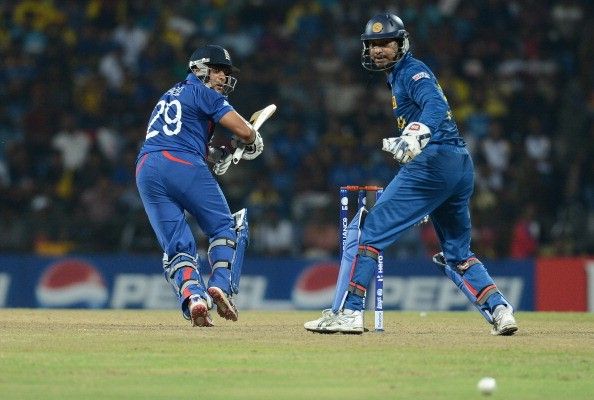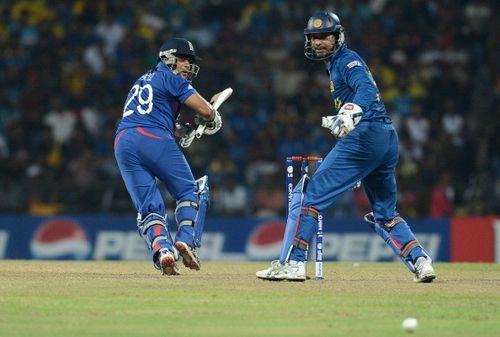
5 of the most innovative tactics that were employed as a stopgap solution
Cricket is a quirky sport in a way that it requires more input from the cerebrum in comparison to any other sports. A good cricketer needs to be as strong as a gymnast who excels in rings, as balanced as an exponent of water surfing, as focused as a table tennis stalwart, and as intelligent as a veteran grandmaster in chess.Over the history of the game of gentlemen, the cricketing fandom has witnessed many strategies, myriad of tactics and preponderance of ruses employed to take the oppositions aback and snitch the game away before they manage to emerge out of the shock.Martin Crowe opening the bowling with a spinner in the 1992 world cup, Duleep Mendis's ploy of opening the batting with a brace of pinch hitters in 1996, Ashley Giles bowling over the wicket into Sachin Tendulkar's pads in 2001 and the (in)famous bodyline tactic of Douglas Jardine are all perfect epitomes of game-changing strategies.But these were all carefully plotted machinations that were mostly sired in drawing rooms after months of researches and days of mulling and hours of debates. These have been well documented and scripted with their implications well etched in the annals of the game.But what about those snarky ploys that came out of a clear blue sky when confronted with the direst of situations? The acumen that begot them, the wanton descend of a bright idea, the sudden arrival of that aureole that precedes a clever plan- all need to be celebrated chiefly for the fascination they provide.Since they are mostly shoehorned, unplanned and executed promptly, more often than not they are outrageously funny and meticulously witty. Here are the best five tactics that were employed as a prompt solution to a problem.
#1 Sri Lanka sending in Sangakkara as the captain instead of Mahela in the 22nd match of WorldT20 2012.

Mahela Jayawardene was Sri Lanka’s captain going into the WorldT20 2012 held in Sri Lanka. But during the 22nd match of the tournament between the home side and England, Kumar Sangakkara walked in as the team’s captain for the toss. For once, fans thought Mahela was injured. But the news came in that he was playing. Fans were perplexed, media awestruck.
Why would a team sack their best captain mid-way during a world tournament? Sanga was asked the obvious question during the toss. As per his answer, a Sri Lankan captain to sustain his position should not only perform well as a player, lead the team well, handle the media adroitly, scupper board politics but should also be able to execute another responsibility successfully. "Mahela has lost three tosses in a row" was his reply.
But as soon as Sri Lankans began their target defense, it was obvious that a malign ruse was afoot as Mahela Jayawardene was marshalling the troops. Later, it was found that it was a clever manipulation of the law to diddle the captain off a possible one match ban at the business end of the tournament.
Sri Lanka took on the West Indies before the match against England and were fined for maintaining a slower over rate, with the captain being docked 20% of the match fee and the rest of the team 10%. According to the law, another such offence would lead the captain Mahela Jayawardene to a one-match ban which would mean that Sri Lanka will have to go into the semi-finals without their premium T20 batsman.
One way to avoid the ban would have been to drop the captain for the game against England since Sri Lanka had already got through to the knockouts but the Sri Lankan management found a new route to cope up with the situation. The clever ruse was the mastermind of the then manager of the Sri Lankan team Charith Senanayake.
Kumar Sangakkara was named the captain for the match which meant that even if Sri Lanka is once again found guilty of maintaining a slower over rate, no one would be banned. It is worth mentioning that Sri Lanka didn’t appoint the team’s vice-captain Angelo Mathews as the captain as he was also fined for a slower over rate during his last match as a captain against Pakistan in the same year.
It was an ostensible violation of the rationale behind handing over a ban to captains who are found guilty of slow over rate twice within 12 months. Sri Lanka easily defeated the purpose of consigning a ban as a deterrent. But, it wasn’t unlawful. The management of the team confirmed it with ICC code of conduct before proceeding with the machination.
This was an embarrassment for ICC as they were thoroughly checkmated. All what they could do was to plead the Lankan team not to repeat the same thing, in return for a promise that their star player would not be banned if he doesn’t wilfully maintain a slower over rate.